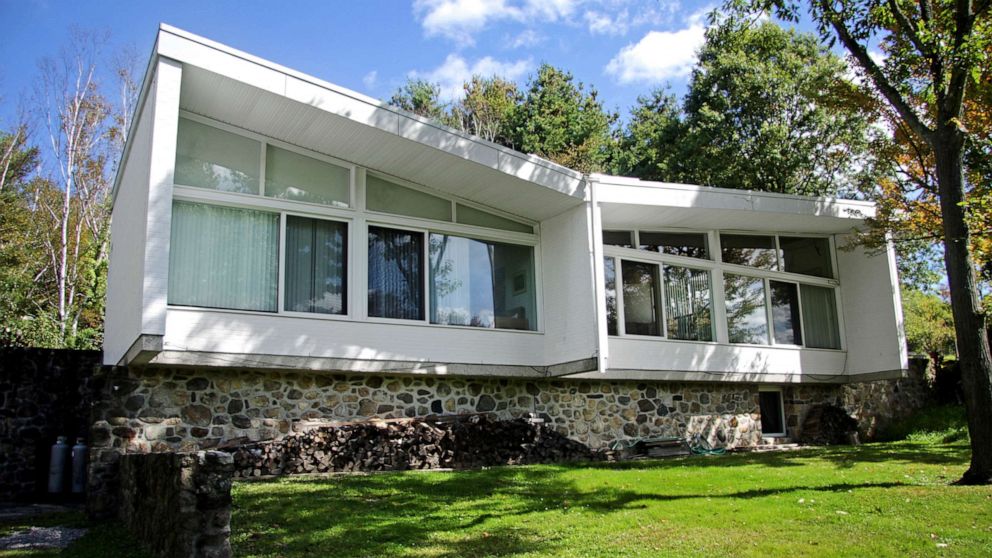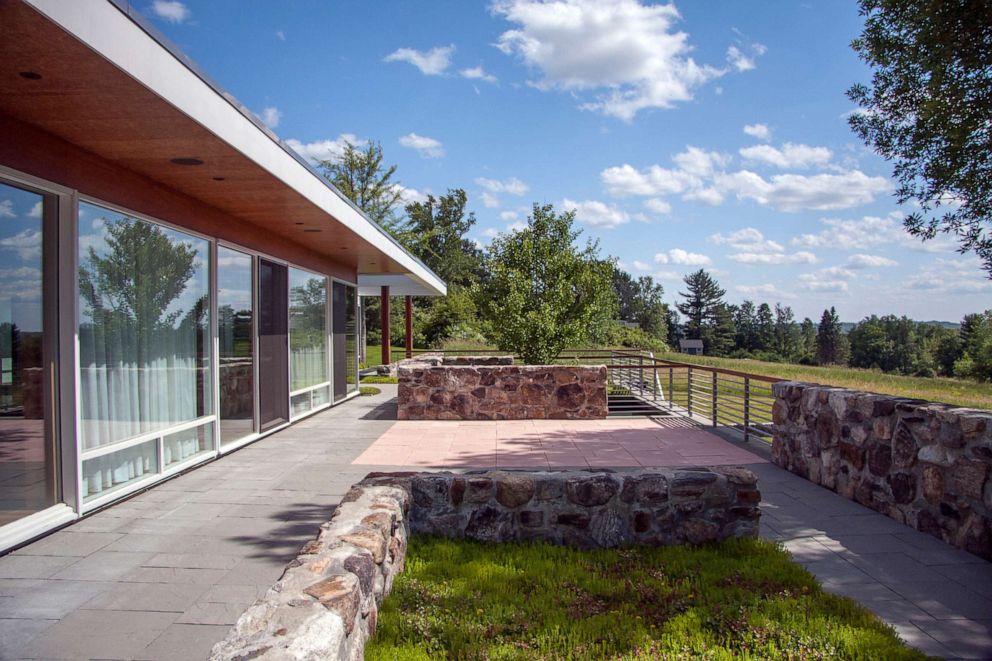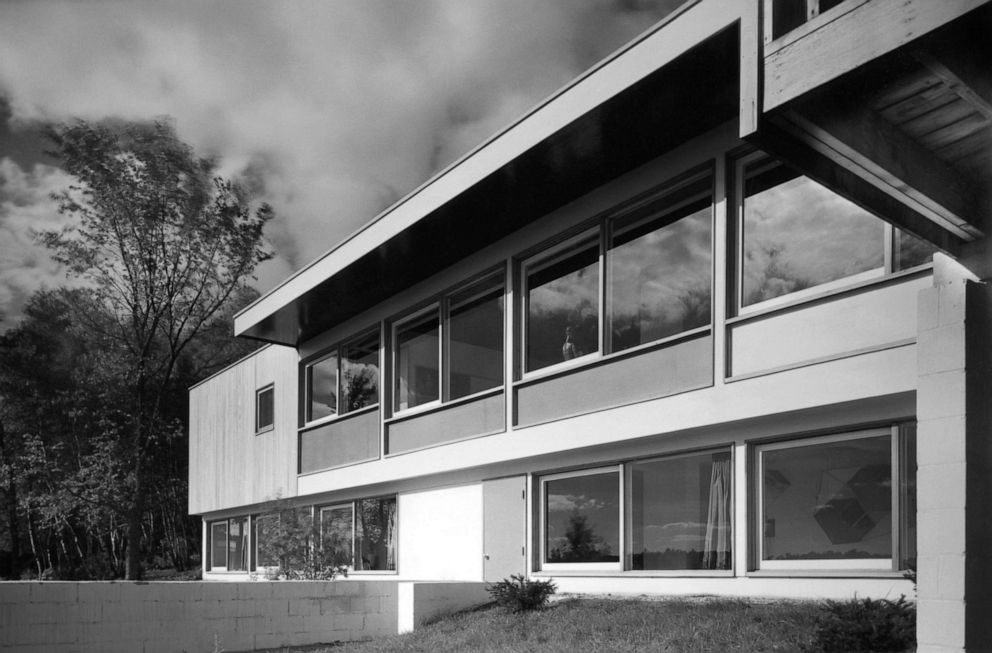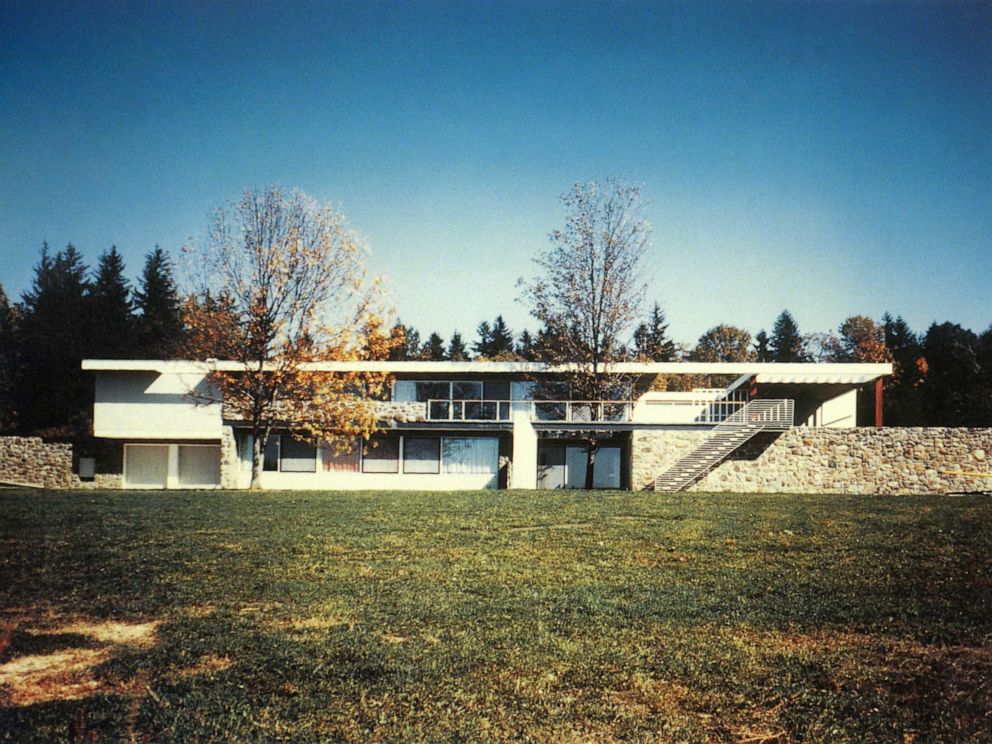In pastoral Litchfield, modernist architecture abounds
The picturesque town is home to more than a dozen early modernist houses

Litchfield, Connecticut -- In 1966, the Hungarian-born architect and designer Marcel Breuer completed work on the Whitney Museum in New York, his most popular though controversial work.
That same year, the Bauhaus-trained Breuer, who played a major role in shaping 20th-century architecture and design, also completed a residential commission in Litchfield, Connecticut. Though less celebrated at the time - the u-shaped dwelling designed with light stucco and glass walls above a fieldstone base, was one of a string of homes designed by Breuer that would forever alter the arc of residential architecture in this picturesque New England town.
Well known for its pristine landscape of rolling hills and endless woodlands, the early American houses of Litchfield - an 18th-century town where some of its homes are older than America itself - typically skew toward traditional, colonial-style New England homes.
But thanks in large part to a few culturally progressive clients who commissioned Breuer to design and build several homes during the post-war period - chiefly Rufus and Leslie Stillman and Andrew and Jamie Gagarin - Breuer was able to carve out a unique architectural niche in Litchfield that continues to influence a generation of designers.
“While his bold, large-scale buildings projected the persona of the heroic architect paving the way for the future of global modernism,” writes author and filmmaker James Crump, in his new book “Breuer’s Bohemia” (Monacelli Press), which explores the architect’s residential work in New England. “The houses that he designed for a small cadre of clients whom he would also count as friends arguably define his essence as an architect.”
(The publication of the book coincides with a feature-length documentary film of the same name by Mr.Crump.)

That essence played out in a series of homes Breuer designed in Litchfield in the 1950s and 1960s, helping to elevate the town to an unlikely place for important modernist architecture.
Iconic midcentury designers such as Richard Neutra, Edward Durrell Stone, and Edward Larrabee Barnes, among others, all joined Breuer in designing more than a dozen modernist projects in Litchfield, cementing a remarkable legacy of modern buildings for one rural New England town.
These houses form an important period in Litchfield's history, says Catherine Keene Fields, director of the Litchfield Historical Society, an organization that collects, preserves, and makes accessible the history of Litchfield from its founding in 1719 to the present day.
“As an architectural movement, the midcentury homes are as much a part of Litchfield’s history as the homes that date back hundreds of years before them,” Keene Fields says. The Litchfield Historical Society recently organized a tour of several Breuer-designed homes in Litchfield, all of which have been maintained and restored by its current owners.
Kyra Hartnett and her husband, Rob, were already living in a restored 1840’s home in Litchfield when they spotted one of Breuer’s residences tucked away on a quiet street just south of the Litchfield Green.
Gagarin II, completed in 1975, was one of Breuer’s last designs and one of two homes the architect created in Litchfield for Andrew and Jamie Gagarin.

For this one, Breuer created what he described as a variation on the binuclear houses, with butterfly roofs that had characterized his work in the 1940s. Fieldstone walls - which helped ground the modernist building on a rural site - were used as a base for the upper floor of the house while floor-to-ceiling plate glass windows occupy its western façade, offering views of the wooded landscape. And much like other Litchfield commissions, Breuer made certain Gagarin II was carefully related to views and to other surroundings.
“For 10 years we would pass it when we were dropping our kids off at school,” says Hartnett, a wallpaper and textiles designer. She and her husband own twenty2, a wallpaper and textile manufacturing business. “We really manifested for ourselves that this will someday be our home.”
Hartnett and her husband eventually purchased the house in 2016. The couple used original blueprints of the house to help guide them through renovations, which included updating the home’s heating and cooling as well as modernizing all of its bathrooms. Radiate heating and slate flooring were also added to the basement, converting what had been a fairly raw space into much more usable space, says Hartnett.
“The blueprints helped us know how to get around the house without destroying it,” she says. “When you have the benefit of living in a home that was so carefully considered, it was important to us to respect the integrity of the original design.”

Breuer, a prolific designer of residential architecture, created a number of small houses in New England that attempted to combine his European modernist background with American materials. In Litchfield, the generally boxy and horizontal design schemes employed the same light, tensile quality of the architect's white structures in Europe.
It was in Europe where Breuer came of age as a designer, studying under architect Walter Gropius at the Bauhaus school of design in Germany, one of the last century’s most influential art and design schools. He would eventually emerge as a designer best known for his expressive buildings and beautifully considered furniture - and a student instrumental in championing one of the world’s most important teaching institutions.
A house should ''not seem overdesigned or cluttered with funny details,'' Breuer once said, according to an interview recorded at the Marcel Breuer Digital Archive at Syracuse University.
Stillman l, commissioned by Rufus and Leslie Stillman, was Breuer’s first Litchfield home design.
The couple tapped the architect after visiting a dwelling he created for the House in the Museum Garden at MoMA, an exhibit of full-scale demonstration houses set up in the museum’s courtyard in 1949. The exhibition, set up by Phillip Johnson, director of MoMA’s Department of Architecture and Design, drew a record number of visitors and is still regarded as one of MoMA’s most influential architecture exhibitions of the twentieth century.
The couple would eventually become lifelong friends of Breuer with their patronage leading to Breuer designing several schools in Litchfield and nine buildings for the Torin Corporation in nearby Torrington, where Rufus Stillman was vice-president.
Breuer designed Stillman l as a two-story, flat-roofed rectangular building with two projecting porches and a massive, white-painted brick fireplace. Completed in 1950, the home’s sliding, wood-framed window panels are thought to be the first of their kind and were specially fabricated for the house. The Stillmans enlisted artist Alexander Calder, a close family friend, to create a mural for the freestanding wall that screens one end of the pool on the property.
The Stillmans commissioned two more houses from Breuer, including Stillman Cottage, a 1973 home set upon stilts and nestled privately in the rolling Litchfield hillside with views of the Naugatuck valley. The main structure consists of two bedrooms, one bath, a combined kitchen and dining space, and a cantilevered screened-in porch.
Holding their value
(page breaks)
Though the design aesthetic fell out of favor with many homebuyers in the 1980s, Midcentury Modern architecture has gained popularity in recent decades. For devotees, the homes are as much an art object as a place to call home.
“They're unique designs and don’t always appeal to the average homebuyer,” says Steve Schappert, owner of Connecticut Real Estate Brokerage in Litchfield County, Connecticut, and director of the Connecticut Art Gallery in Thomaston. “But that’s kind of the point for buyers who are after something that’s unique,” adds Schappert, who has spent four decades in Connecticut real estate. A trained building analyst, he’s also built a dozen homes in the state.
“Midcentury architecture, especially in Connecticut, will appeal to a certain kind of buyer who sees value in owning a piece of architectural history,” he says. “It’s just as important to them as finding a comfortable home to live in.”




